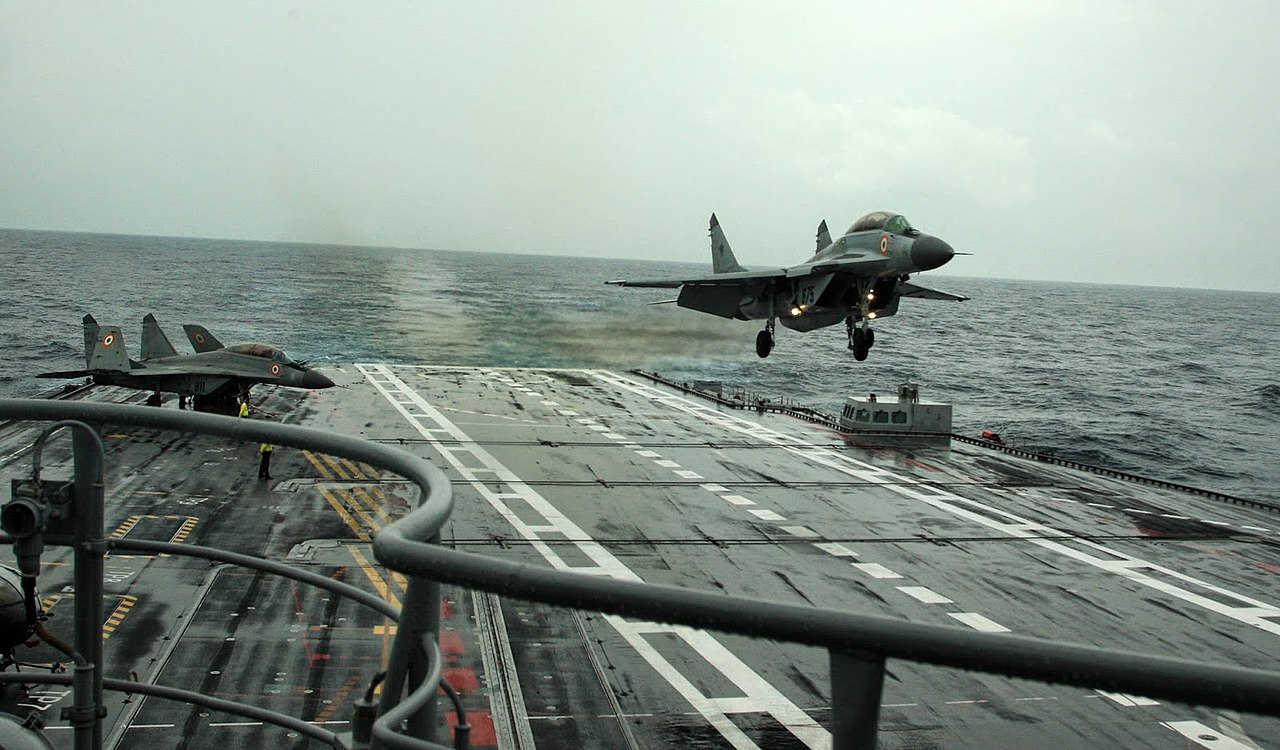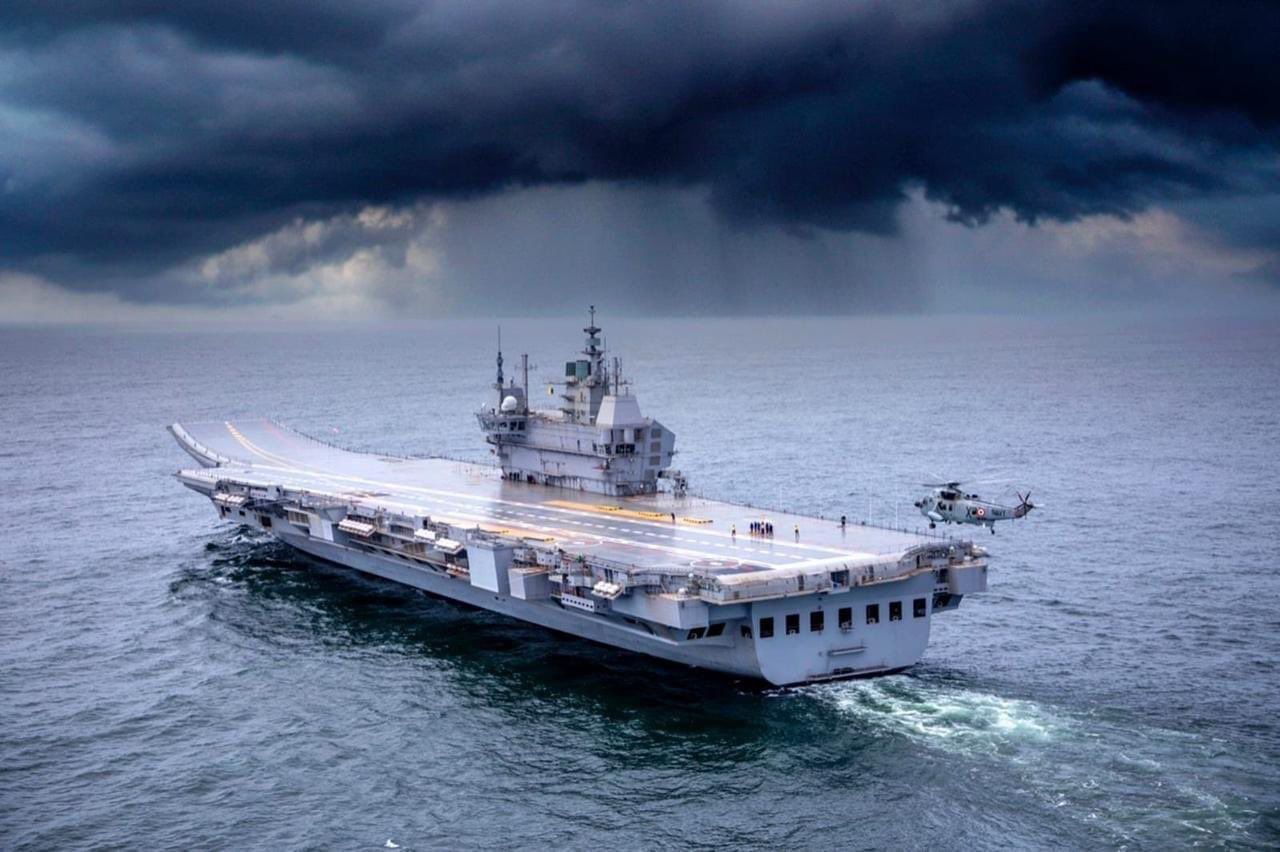India’s first homegrown aircraft carrier INS Vikrant was commissioned on September 2 at Cochin Shipyard Limited in Kerala in the presence of Indian Prime Minister Narendra Modi.
The ship, which costs Rs 20,000 crore ($2.5 billion), has a 262-meter long and 62.4-meter broad flight deck. It was constructed with indigenous equipment and machinery provided by over 100 MSMEs and major industrial firms in India.
The Russian-made ‘Black Panthers,’ a naval version of the MiG-29 fighter, would be the primary fighters of INS Vikrant, the largest ship ever built in India. The aircraft has been in service with the Indian Air Force for decades.
The aircraft carrier can accommodate up to 35 aircraft. The naval MiG-29 jet, called MiG-29K, will operate from INS Vikrant in anti-air, anti-surface, and land attack roles.
The MiG-29K is an all-weather fighter capable of exceeding twice the speed of sound — or Mach 2. It can pull up to eight times the force of gravity and reach altitudes of over 65,000 feet. It can engage targets in the air, sea, and land.
The MiG-29K can fly long distances to complete crucial missions because of its air-to-air refueling capability.

The MiG-29K squadron has been named INAS 303, also known as the “Black Panthers.” It embodied a new age of fighter flying in the Indian Navy, earning it the moniker “game-changer.” The squadron is based at INS Hansa in Goa.
The MiG-29K has enough power to perform air dominance and power projection tasks simultaneously, giving the fleet commander at sea significant flexibility.
The warship’s airwing will also include Kamov-31 helicopters, MH-60R multi-role helicopters from the United States, and domestic Advanced Light Helicopters (ALH) and Light Combat Aircraft (LCA).
The MiG-29K (Korabelny) belongs to the 4.5 generation of aircraft. It differs significantly from the IAF MiG-29B variants optimized for air-to-air missions.
Russia shipped a total of 45 MiG-29K/KUB fighters to India in two batches. The second lot of 29 aircraft was delivered in 2016, while the first lot of 16 aircraft was delivered in 2011.
In 2020, the Indian Defense ministry approved the procurement of 21 MiG-29s along with the upgradation of 59 MiG-29s at the cost of ₹7418 crores (roughly $1B).
It is a dual-role fighter that can switch between air-to-air and air-to-surface operations. Meanwhile, India is also focusing on upgrading the capabilities of this aircraft. The Indian Navy is testing a new mission computer for its carrier-borne Mikoyan-Gurevich MiG-29K/KUB fighter aircraft.
Hindustan Aeronautics Limited, a state-owned defense company, produced the mission computer. The new system is designed to provide the Navy with the option to integrate both locally manufactured and Western-origin air-launched weaponry with the Soviet-era MiG-29K.
According to an industry source familiar with the project, the program began in January 2021 when Russia refused to upgrade the mission computer or supply HAL with the source code.
It could take another five to six months for the INS Vikrant to be combat ready, with fighter planes performing sorties and the warship outfitted with surface-to-air Barack missiles. The flying tests are expected to begin in November and end in May 2023.
The 26,000 tons of steel used to build INS Vikrant is warship-grade steel developed for the first time in the country by the Steel Authority of India Limited (SAIL) in partnership with the Defense Research and Development Laboratory (DRDL) and the Navy.

The warship-grade steel is now being utilized to produce all of the country’s warships.
INS Vikrant is propelled by four General Electric LM2500 engines, giving it a top speed of 28 knots and a range of 7500 nautical miles. The ship contains over 2200 compartments designed for a crew of approximately 1600 people, including specialized rooms for female officers and sailors.
The commissioning of INS Vikrant would allow the Indian Navy to operate two aircraft carriers simultaneously, the other being INS Vikramaditya. This would address the Navy’s challenge of continuing naval operations while the other ship is undergoing maintenance.
Vikrant To Get New Fighters?
India’s new aircraft carrier will be equipped with MiG-29K fighter jets. However, the Indian Navy is already hunting for multi-role naval fighters for INS Vikrant.
The Indian Navy is interested in procuring a twin-engine aircraft to replace the MiG-29Ks currently operating from INS Vikramaditya.
Boeing’s F/A-18E/F Super Hornet and Dassault’s Rafale-M, the naval derivative of the French multi-role fighter, are competing to provide carrier-borne warplanes to the Indian Navy.
Both fighters have already undergone flight testing by the Navy at the INS Hansa shore-based test facility in Goa to test which aircraft would work best with the 40,000-ton INS Vikrant.
Fighter aircraft are launched using the Short Take-Off But Arrested Recovery (STOBAR) technology. INS Vikrant is outfitted with a ski-jump and a set of three ‘arrester wires’ for recovering the aircraft once it has been launched.
Which fighters will replace the MiG-29K is yet to be seen, but many aviation experts have favored the Dassault Rafale as the Indian Air Force has been extremely satisfied with its performance and called the Rafale-M an ideal aircraft for the Navy.
- Contact the author at ashishmichel@gmail.com
- Follow EurAsian Times on Google News




